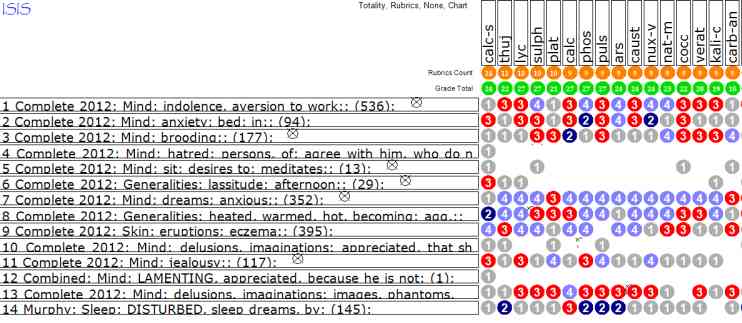Jane’s Case and the Use of an Integrated Process of Psychotherapy and Homeopathy
I recently contributed a chapter to a ground breaking book (*see below for citation), that presents an integrated view of homeopathy and mental health issues. As one of the 20 professionals selected to provide a chapter, I determined to focus on how to construct a framework that will enable one to optimally assess a needed remedy through the integration of psychotherapy and homeopathy. The main ingredient is an emphasis on celebrating interpersonal communication. The importance of “joining” those seeking assistance is essential to gaining the contextual information necessary to make the best possible assessment. When we synchronize with others, there is a biological connection that allows for shared rhythms. It is like “good vibrations” and expedites a true sharing of emotions and clarity of description. It is also imperative to understand the context and its systemic implications: in other words, to see the ecological connections that bring out the remedy picture and plan for treatment. Understanding how our world works in part-to-whole connections is understanding nature. By recognizing how homeopathy is in tune with nature, creates a map of how unique patterns, miasms and stress management skills are learned and/ or perpetuated, which can enable the practitioner to match appropriate remedies and psychotherapy interventions.
By exploring psychology as another ingredient, we are following Hahnemann’s use of humanistic treatment, which is producing a gentle cure from the detailed information of psychological states elicited from the provings of the homeopathic remedies. Psychology is where solutions are found. Using psychotherapeutic methods and themes related to presenting sensations (such as visualization, forgiveness and meditation) allows rubrics to appear, which takes homeopathic healing and “mind cures” to new levels. J. T. Kent, in his Lectures on Homeopathic Philosophy, talks of being empathic, “Sympathy and similar can go a long way in the realms of the psyche.” Constantine Hering for instance, resolved his emotional grief while seeing a ballet based on a Greek tragedy that was similar to the origin of his situation. The ingredient of respecting constitution and temperament is the foundation and spice of what Clemens Von Boenninghausen mentions in his process of homeopathic inquiry to learn the: who, what, when, why, with, and what modes of the total narrative of one’s existence. This helps with understanding causation and how an imbalance opens the door to needed change.
Maintaining homeopathic treatment along with psychotherapy creates lifestyle and mind/body skills that support and adjust the healing process. The ingredient of allowing collective connections represents the archetypical nuances that give us an understanding of how people construct their world. Carl Jung believed that the subjective part of our personality gets its information from symbols of inherent instincts, ancestral connections and universal archetypes. The collective unconscious communicates from dreams and the timeless space that is the source of all human experience. Being aware of these connections and how symbols give us understanding of life’s paradoxes and potential creativity contributes to our moving toward wholeness. Together homeopathy and psychotherapy, when integrated, provide assistance to this process.
Jane’s Case
Jane, a woman in her early thirties came to see me about two years ago. She presented as very intuitive, extroverted, open and impressionable. There was a sense of self importance and desire to be the center of attention. She however was very concerned about her sense of physical weakness and negativity especially as the day moved on, when things were not going her way or when others disagreed with her. She had been to several psychotherapists and a homeopath but was not able to achieve any results. I felt as if she was testing me to determine how much I was interested in her story. After some gentle probing it was obvious that she undermined treatment in the past by believing that there was no way to change her predicament.
I broke the ice by having her do a gentle visualization where I asked her what it was she was not getting in life. I suggested she view it from a lens like perspective in the present and tell me how it felt. I then asked her to widen the lens and see the peripheral outlines of the room and the world outside. When I asked her how she perceived her original problem, she admitted that she did not want to let go of her grievance of not being appreciated in this world.
She had a keen ability to be perceptive, as she was able to assess her immediate context and was interested in continuing to try therapy to talk about her low energy level and emotional state. I thought of remedies within the Sanguine temperament since she was intuitive. Her verbal and non-verbal characteristics demonstrated an aura of sensitivity, ambiguity and instinctual attributes characteristic of that temperament. Jane felt worse in heat and would get upset when in a hot room. The Sanguine temperament is hot, moist and fiery and can be very optimistic, outgoing and loquacious; however they can easily change to being negative and lethargic as she had described becoming as her day progressed. Her physical complaints included tension in her heart area that extended downward toward her legs. Her dreams followed a theme of being fearful and waking suddenly in a panic. She was passionate, expansive, social and enthusiastic; however her negative traits were characterized by haughtiness and inconsistencies. She was feminine and muscular with strong features and rosy redness to her face. Her hair had a wavy thickness with a reddish tint, all of which fit in the Sanguine temperament (see David Little’s online course “The History of Constitutional Medicine,” sections on temperaments).
Her family of origin depicted in her Genogram (a multi generational psychological tree; see Monica McGoldrick’s, The Genogram Journey, Norton: New York, 2011) indicated many stories about the lack of structure (indicative of the need for a mineral remedy,) appreciation, encouragement and affection from her parents. She described a sense of low self esteem and felt like she could not succeed at her job (retail/sales.) She also narrated trouble organizing her life which all fit into the psoric miasmatic state of needing support. However, her evaluations and performance were acceptable to her employers. She articulated being criticized by her parents for her choice of employment. Her narration of her early family dynamics stressed that she never was “good enough,” and even when she was motivated or excited about doing something her parents and older sibling would “bring her down.”Although she became easily angry at others, it was more of a jealousy and she would turn her anger into brooding.
Jane was not able to express this or show disagreement in her family of origin since she perceived this was unacceptable. Asked how she dealt with this, she explained that she would become very introverted and held her anger inside, would sit still for long periods when at home but constantly discuss her sense of dissatisfaction (not anger) with anyone who would listen. When asked what it was that she was not getting in life, she expressed it as wanting “consistency and her integrity,” that her parents destroyed. She thought of this daily and blamed her parents for her dissatisfaction with work and life. She would become exhausted whenever she focused on this feeling or was involved with her parents. When she was sad and tired she would become yielding and feared losing her integrity and “self control.”
She was striving for affection and appreciation. Her narrative described her feeling of being put down. There was a strong dislike for people who disagreed with her. Everything seemed to not go her way even if it was not the case. She felt that things would not work out and misfortune was always a potential issue. Jane was feeling that she was singled out and persecuted. This was staunchly defended and maintained. There was much blame for her perceived misfortune and a feeling that the future held little success. Thus little confidence and self reproach became a theme in her life. She had a feeling that there were people around her in the evening passing judgment on her which led to poor sleep patterns and anxiety in bed.
What emerged from her family narratives and her grievance story was someone with clear extroverted intuitive traits who would move to a nervous introverted state. This represented what Carl Jung described as one moving from an outgoing passionate sanguine state, to an inferior side which was in her case an inward angry/jealous nervous thinking state. Her outgoing “persona” was one of being impressionable, artistic, intuitive, and the center of attention. The “shadow” side or inferior trait (usually where grievances and symptoms of needing attention are located) was characterized by false pride, self pity and dwelling on her problems.
The homeopathic remedy that came up to complement and stimulate her psychotherapy was Calcarea Sulphuricum. The remedy was indicated due to her rumination of misfortune and her attempts to constantly get appreciation. She also lacked self confidence, lamented, would sabotage moments of success and felt that she could not succeed. There was a strong jealousy of friends and co workers. The remedy is indicated for being hurried, easily angered, irritable, and changing from being lively to melancholy as the day progresses. Her articulated general physical attributes, being warm blooded and various eczema eruptions, also confirmed this particular remedy as well as it being anti-psoric. Jane also exhibited a nervous (thinking) layer on her innate Sanguine temperament which matches the mental provings of Calcarea Sulphuricum, which include disliking those who disagree, irritability, and timidity following a state of being in good spirits.
It was suggested that she take the remedy in a medicinal solution of the 6C potency: a four ounce bottle, succussed 8 times, placing one teaspoon into approximately 4 ounces of distilled water, stirring and taking one teaspoon from this dilution. She did this twice a day for ten days with noticeable improvement in her anxiety and attitude toward life. Jane articulated a new sense of balance, but was still not where she wanted to be, however this motivated her to support the psychological changes she ultimately needed. I had her wait a week then start the same remedy in LM #1 potency, using the same procedure but once every four days. This worked well, producing more improvements in her well being, but she felt that on the fourth day of this protocol she had some anxiety and a relapse of symptoms. After adjusting to taking the remedy every three days, she articulated no negative symptoms and was more focused to deal with her psychotherapy treatment.
Jane’s articulated grievance revolved around her “loss of position,” shame and misfortune regarding the dynamics with her parents and jealousy toward her siblings. This resulted in a loss of control and distorted sense of self importance. Her initial plan for psychotherapy was to work on these feelings as the cause of her consequent anger and jealousy. Because of her improved sense of well being due to the remedy, she was able to see this pain as being in the past and that being in the present with these feelings was a starting place to find solutions. Feeling better emotionally, she also made a commitment not to be the victim, set her goals, and practiced breathing and meditating from her core temperament, which was both positive and intuitive. She recognized what it was she was trying to change and it became a freeing experience for her to admit and accept that she could not change the past.
Knowing that she was not condoning or minimizing the past enabled Jane to feel grateful for what she had, accept the pain as part of the suffering of life and to recognize her noble desires to be at peace with her past. Her commitment to make her life worthwhile was now at the forefront of her thoughts. Jane now began to see herself as being successful and, doing the best that she could to have control of her life and mind/body. The remedy supported this shift in her emotional state.
She continued coming for psychotherapy on a biweekly basis and worked on staying in the present so she could make changes in the pain and grievance she was experiencing. Through progressive relaxation exercises, Qigong, visualizations (related to her present sensations and family of origin issues,) as well as mastering better skills to deal with conflict, Jane continued to make changes in all her articulated symptoms and her main grievance of not feeling appreciated. Eventually she was able to short circuit the “fight or flight” part of her nervous system and find peace in the calm parasympathetic part more often. Jane continued the remedy clearly sensing its influence on her therapy, slowing down to once a week and moving up to LM #3 potency over a seven month period. I was able to monitor the remedy during her psychotherapy sessions and occasionally recommend acute remedies for certain minor symptoms. Eventually she stopped her therapy but contacted me monthly (for several months) and started taking the remedy in the LM#6 potency as needed.
*“Integrating Psychotherapy and Homeopathy: A Means of Determining the Needs of the Vital Force” in Homeopathy and Mental Health (Homeolinks: Netherlands, 2010, Edited by Christopher Johannes and Harry Vander Zee; also see “Exploring Psychology and Forgiveness in Homeopathic Treatment” in The American Homeopath, 2012,





Dear doctor,
The write up on THE USE OF INTEGRATED PROCESS OF PSYCHOTHERAPY AND HOMOEOPATHY is a welcome addition to the Homoeo cure series presented by practitioners for various
cases.Being a post graduate in applied psychology practising homoeopathy to my family members , friends and relatives free of cost I find your piece of information very encouraging.Homoeopaths should
endeavour to bring the patient round to FREE ASSOCIATION which will be much helpful to get clear
idea about the case.Thank you doctor for your useful information.
thank you!! Where do you practice?
Be well
Ken
Dr Silvestri,
Indeed, a very lovely case of Jane. Thank you for publishing.
Sympathy and similar certainly go a long way, as Kent puts it. It is a moving experience to see in practice that deep understanding of the patient’s state and his story, and a few well-meaning and heart-felt kind words work very well along side the similar remedy – one alone might work too but the two together do even better. This style of engagement creates a healer- client bond that is hard to describe.
Vatsala.
Thank you for your kind words. Where do you practice?
Be Well
Ken